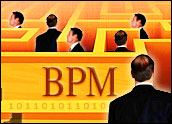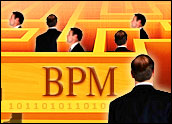
For decades, organizations have been dealing with the challenges of driving better, more effective customer service. Traditional customer relationship management (CRM) and contact center solutions have focused on presenting consolidated customer information, but they still rely heavily on employees to take the right steps to resolve customer issues.
This means that the customer’s experience can vary greatly depending on the manual processes and efficiency of the staff at any given organization. Why can’t the industry evolve to a point where service is personal, quick, and also cost-efficient to deliver the best customer experience?
Companies continue to spend a fair amount of money on CRM solutions. So why aren’t customer satisfaction scores improving? The answer is that too often CRM reinforces silos rather than removing them.
CRM has typically ended up as an isolated point solution and has typically ignored the fact that customer requests must often span multiple departments and enterprise systems. Few companies have figured out how to solve this problem, and yet it is truly a CRM necessity.
Lost in Translation
Historically, CRM solutions have been standalone systems that are implemented within the front-office but have limited integration with other departmental solutions or back-office systems. Such an approach means that the solution is only as good as the information and processes housed within it.
Customer issues that must be completed by other departments are often “lost in translation,” and it’s frequently the customers who are left to track issues through to resolution. Surely, the next-generation of CRM solutions can do better. Yet what can they provide above and beyond what traditional CRM systems have brought to the table?
By implementing a CRM solution that utilizes business process management technology, organizations can deliver a better customer experience while lowering the overall cost of service. BPM solutions are fundamentally different because they aren’t isolated or siloed. They manage work from end-to-end and can integrate human tasks with data and functions from other systems to generate efficient, streamlined customer-centric processes.
Imagine customer service reps being guided through each step of a service interaction, knowing precisely what to say and do for each individual customer situation. What if hand-offs to other departments and updates to legacy systems were automated, so that requests could be resolved with speed and ease? That’s what the next-generation of BPM-based CRM solutions can offer.
Driving Business Transformation
Organizations need to be more customer-centric to capitalize on “moments of truth” and build stronger customer loyalty. BPM solutions that are based on sophisticated business rules can provide additional innovations. “Adaptive intelligence” technology, for example, can dynamically capture and remember customer behavior in order to proactively suggest a proper course of action that can increase the likelihood of customer satisfaction.
Traditional, siloed CRM solutions are not equipped to deliver such support. However, the best BPM technology can deliver solutions that can dynamically adapt customer processes based on situations, customer criteria and business goals, ensuring that customers get the most effective level of service, and that CSRs attain higher productivity. Basically, this type of CRM system is more intelligent than traditional CRM solutions, and it is able to use this intelligence to create more advantages for the organization using it.
Such a revolutionary approach to CRM helps change the game when it comes to customer loyalty. By delivering a consistent experience across the customer service organization, companies are able to more quickly influence customer loyalty and experience to drive positive results.
Utilizing BPM also enables organizations to roll out changes in processes more easily than with traditional CRM solutions. Without such an approach, organizations have to rely on training and employee best practices to effect change. BPM ultimately offers transparency, uniformity of processes, and greater integration to drive effective business transformation within customer service organizations.
Using BPM to implement a proper CRM solution puts the focus back on the customer. After all, what good are low handling times if the customers are not getting their issues resolved? BPM assures the best of both worlds. It facilitates efficient operations on the part of the service provider, and it provides proper guidance and resolution for the customer, enabling organizations to achieve a high level of efficiency and overall customer experience. Isn’t that what CRM was supposed to be doing all along?
Amy Bethke is the senior director of product management at Pegasystems, a provider of business process management (BPM) software solutions.














































